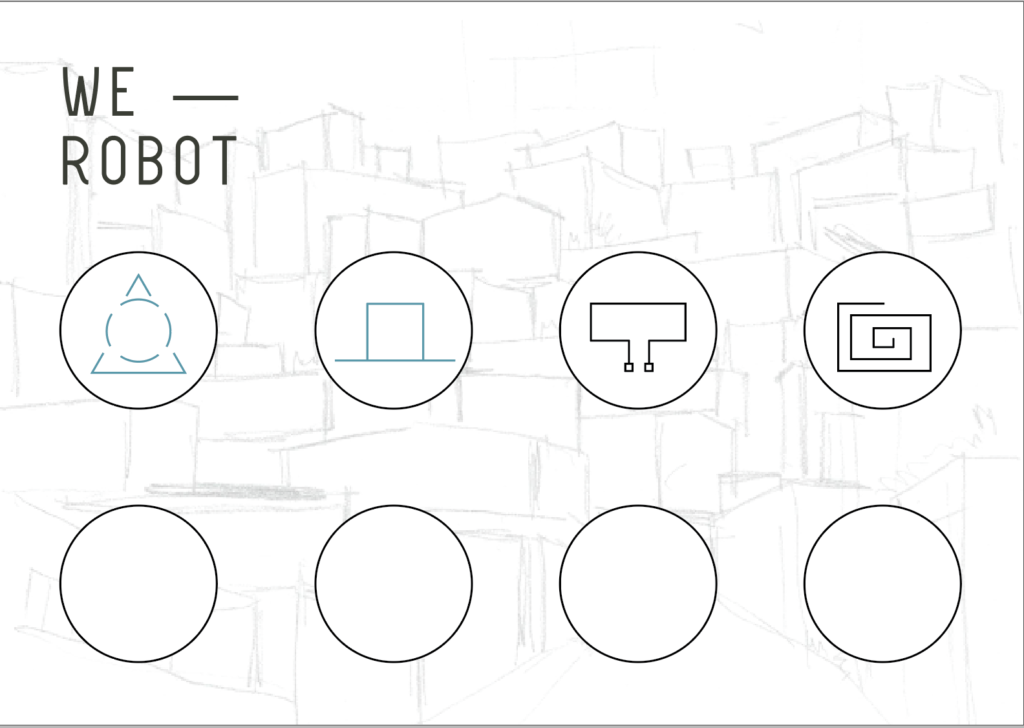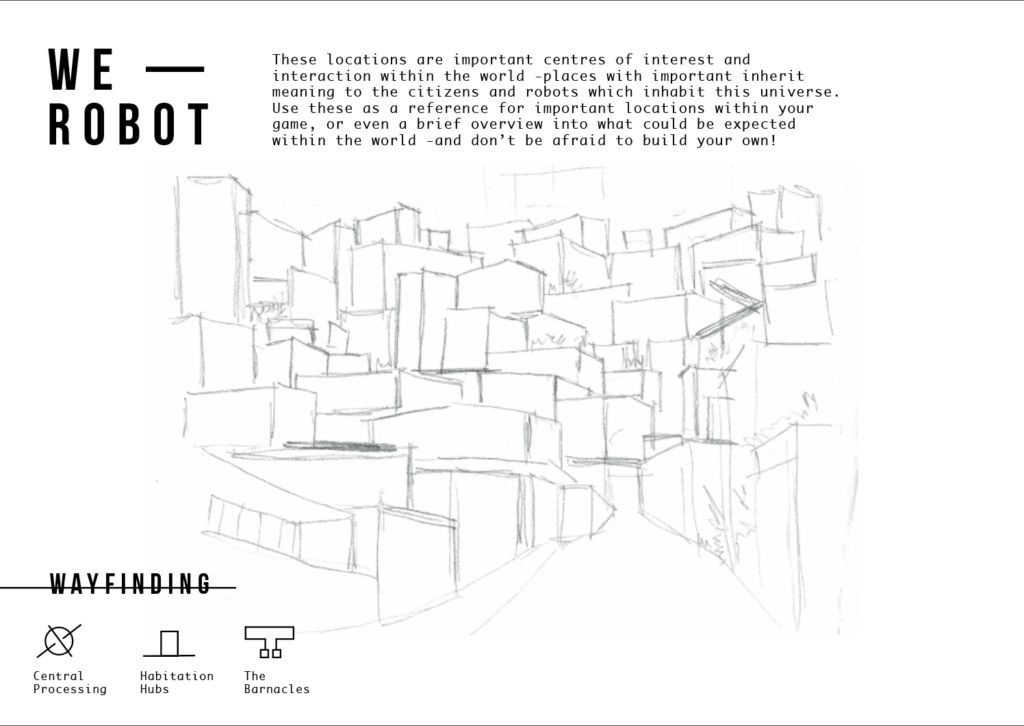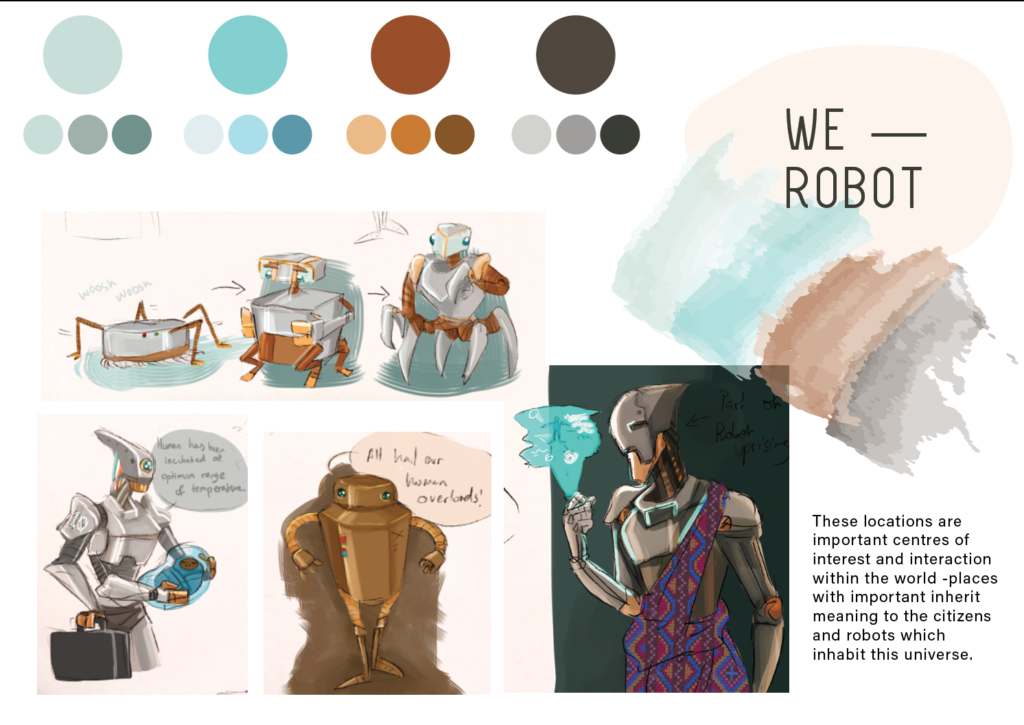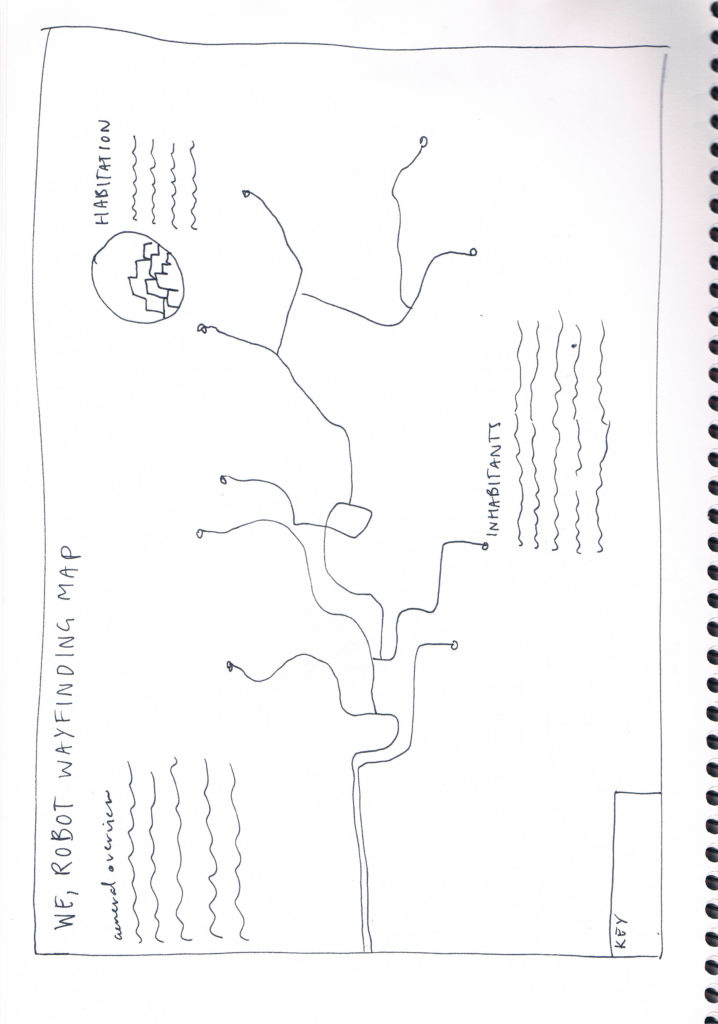







Co-design was a big factor in the development of the world map. The architectural drawings required lots of iteration, initially three dimensional but refined through a stripped-back ‘city pattern’. This was combined with further design elements to create a compositional layout for the map which also conveyed the We, Robot aesthetic.



While the first version of the We, Robot Gamebook goes into great detail about the world and how players can interact with it, additional material such as maps and posters can be included to further bring the world to life.

The focus on wayfinding is best illustrated through a worldmap, which allows players to quickly observe areas of the world and make sense of this. Accessible information aims to encourage players into wanting to discover more about the game world.
Whilst developing the ‘drag and drop’ system, the concept of cards was introduced as a toolkit to physically represent world characteristics.
During the TILT activity, four characteristics of the world could be determined, which then translate into four world cards.


Cards could be grouped together for each of the categories in the system. A symbolic object attached to a keychain could keep the cards together, and work as a tangible game artefact.
Notes from observations of multiple workshops utilising systems inspired by The Quiet Year, Deep Forest, Tiny Fate and more
These observations provided insight into the introduction, setting up, and overall player involvement in world-building from both experienced and novice rpg player’s perspectives.



